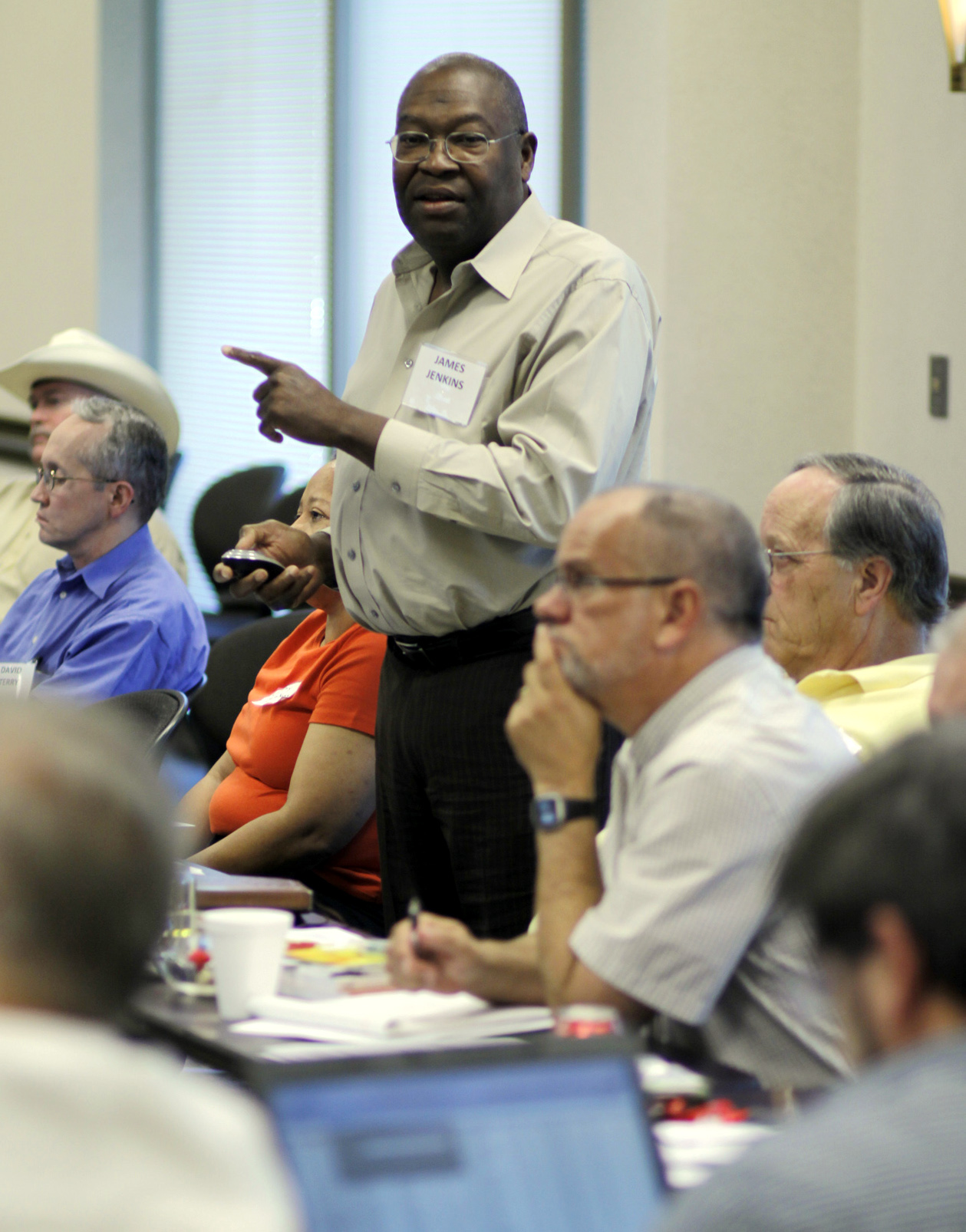
ALPHARETTA, Ga. (BP)–The challenges and opportunities smaller Southern Baptist churches might embrace to reach their communities with the Gospel was the focus of a Small Church and Bivocational Pastors Missional Initiative Dialogue at the North American Mission Board.
Congregations of less than 200 members account for 33,522 churches within the Southern Baptist Convention, a majority of the nation’s largest non-Catholic denomination.
The meeting of two dozen church and denominational leaders served as a follow-up to an 18-month series of discussions between NAMB’s church planting group and field partners, including pastors, associational directors of missions and state convention staff. This birthed the idea for a “small church missional initiative” geared to connect smaller churches to each other for greater impact and cohesion.
“This was sort of like the capstone on the whole project,” said George Garner, a church planting strategies consultant at NAMB who moderated the meeting. “We’ve been working on a strategy the last 18 months and it evolved to the place where we really want to put this together under one frame.
“What we’re trying to do is get a snapshot. The perception is that we are a mega-church denomination …,” Garner said. “What we want to see is a mobilization and empowerment among small churches.”
Garner added: “We need mega-churches and we need more of them. But if we’re going to penetrate the lostness of North America we have to realize that many will start small and many will stay small.”
Participants affirmed a need for greater partnership, less territorialism, less emphasis on programs and more on making disciples, and the legitimizing of non-traditional church models, including the work of bivocational pastors.
Doug Merritt, a church consultant with LifeWay Christian Resources, cited research from a recent transformational church study of 7,000 North American churches across denominations.
“God is doing His work of transformation in all kinds of churches,” Merritt said. “One of the great blessings we have as researchers is when we find someone doing transformational work in places many people don’t think about. Any church can be a transformational church.”
Transformational churches see people become more like Christ, and congregations become more like the body of Christ and reflect the Kingdom of God, Merritt said.
James Jenkins, an African American pastor of Baptist Bible Fellowship in Shreveport, La., highlighted the importance of continuing efforts in the Southeast.
“We don’t need to abandon the South,” Jenkins said. “Cities in the South are where blacks are moving to.”
Jenkins continued to paint the picture of an African American church community needing to be strengthened with solid discipleship practices and especially the need for proper assessment and training for leaders. “We’re too quick to put new believers into leadership positions,” he said.
Other threads of conversation during the Oct. 21-22 sessions included acting as a missionary within a community to know it intimately; the characteristic struggles facing small ethnic churches in urban contexts; being a disciple-making church; and the new face of bivocational pastorates.
Bivocational pastors, often called “part-time” and perceived as something of a transitional step toward becoming a “real” pastor, typically have not been seen as leading churches that can be ends in themselves, freeing up members and staff to be flexible with funds and engaged with their community.
“I know a pastor in Georgia who works as a police officer so he can fund his work with a house church,” Bill Barker, director of Appalachian Regional Ministries, said as the group affirmed the vitality that bivocational leaders and small churches bring to the denomination.
“Often you have a professional who sees a need but is working where resources aren’t available to meet that need,” Garner said. “So the pharmacist or the police officer or whoever he is doesn’t quit his job. He essentially begins two full-time jobs serving a congregation and serving his employer.”
Participants agreed that small church pastors need to embrace where they are, doing what works for their contexts and leaving the results to God.
“I go out and I lean against their fences,” said Jeff Smith, discussing his missional approach to ministry in an area full of cowboys. “You can’t say this is how it’s done, but you can say this is what I’m doing and you can use what works.”
–30–
Adam Miller is a writer for the North American Mission Board.

















